How Accurate is Oracle’s “Cut Your AWS Bill in Half” Guarantee?
Executive Summary
- Oracle has made many claims about cutting the bill of AWS customers dramatically.
- We investigate this claim by Oracle.
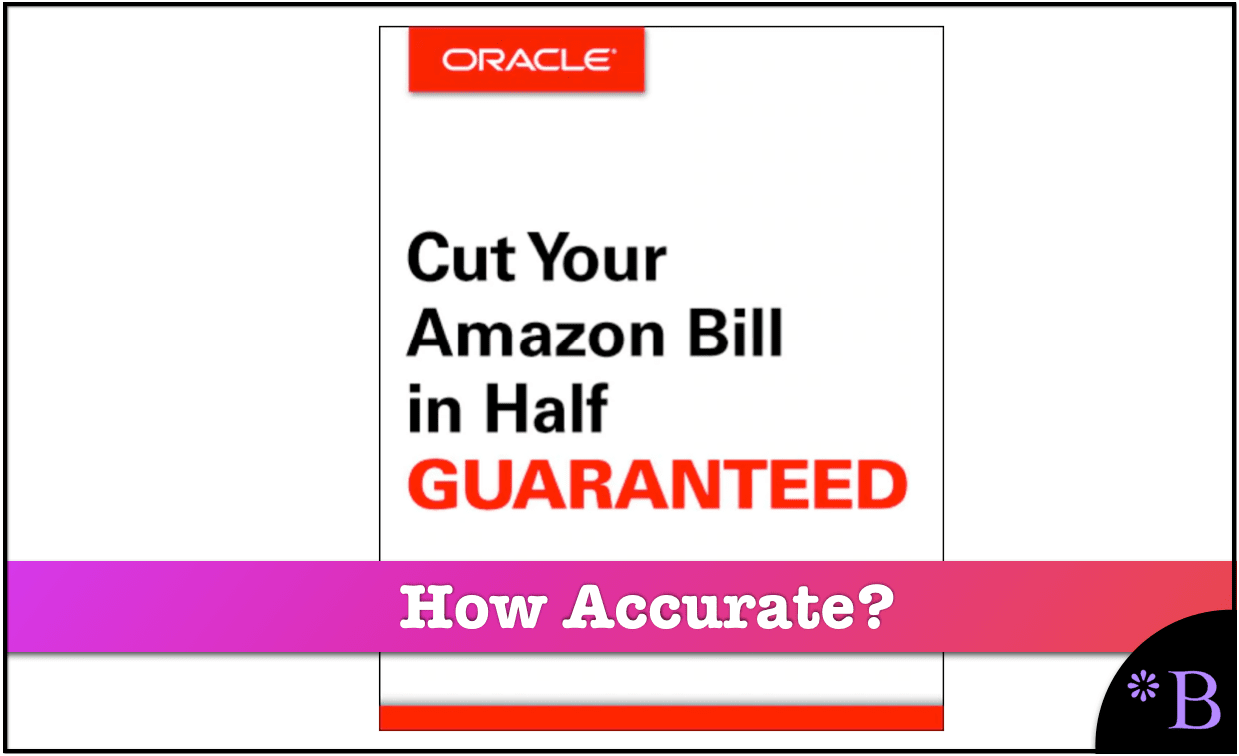
Introduction
We caught SAP lying about its promise to reduce the costs of customers using AWS. After reviewing how Oracle constructed this premeditated lie, This is the kind of BS that makes you so angry you want to drown puppies.
Our References for This Article
If you want to see our references for this article and other related Brightwork articles, see this link.
Lack of Financial Bias Notice: The vast majority of content available on the Internet about Oracle is marketing fiddle-faddle published by Oracle, Oracle partners, or media entities paid by Oracle to run their marketing on the media website. Each one of these entities tries to hide its financial bias from readers. The article below is very different.
- This is published by a research entity, not some dishonest entity that is part of the Oracle ecosystem.
- Second, no one paid for this article to be written, and it is not pretending to inform you while being rigged to sell you software or consulting services. Unlike nearly every other article you will find from Google on this topic, it has had no input from any company's marketing or sales department. As you are reading this article, consider how rare this is. The vast majority of information on the Internet on Oracle is provided by Oracle, which is filled with false claims and sleazy consulting companies and SAP consultants who will tell any lie for personal benefit. Furthermore, Oracle pays off all IT analysts -- who have the same concern for accuracy as Oracle. Not one of these entities will disclose their pro-Oracle financial bias to their readers.
Oracle cannot compete with AWS on price.
Anyone can verify this by using the pricing calculators to compare specific service pricing. However, when Oracle claimed they would cut your AWS bill in half, we actually thought Oracle finally had become serious about the cloud and decided to subsidize their cloud services with their vast monopolistic support revenue instead of spending tens of billions every year on stock buybacks.
But we knew that Oracle services are priced much higher than AWS, so lowering their prices by at least 50% across the board sounded too good to be true. We decided to do what we do best at Brightwork Research.
Here’s the offer. You can verify it for yourself on Oracle’s website at this link.
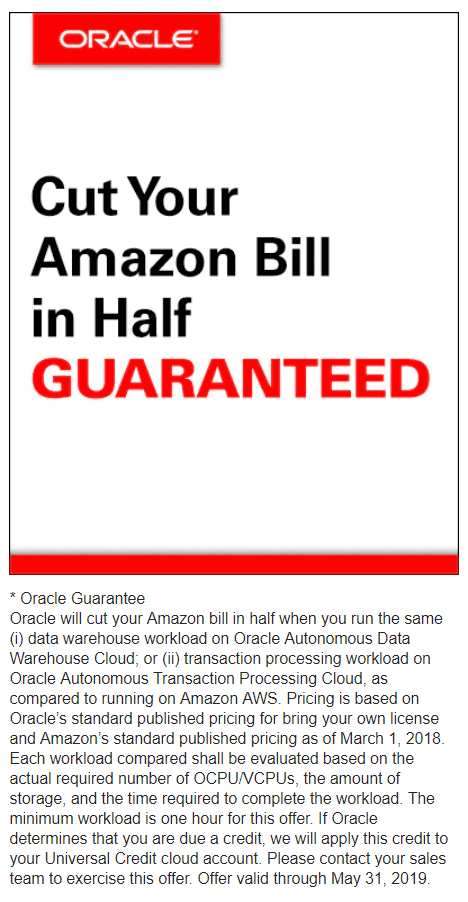
Reading the Fine Print from Oracle
All you have to do is read the fine print at the bottom.
The guarantee is valid until the 31st of May 2019.
Workloads must run in Oracle’s Automated Data Warehouse Cloud or Oracle Autonomous Transaction Processing Cloud.
The offer only applies to the Bring Your Own License of the above services.
Why is This “Guarantee” Only Valid Until 31st of May 2019?
Oracle Automated Data Warehouse Cloud and Oracle Autonomous Transaction Processing Cloud (the only services to which this offer applies) require the Oracle Multi-Tenant database option as a pre-requisite.
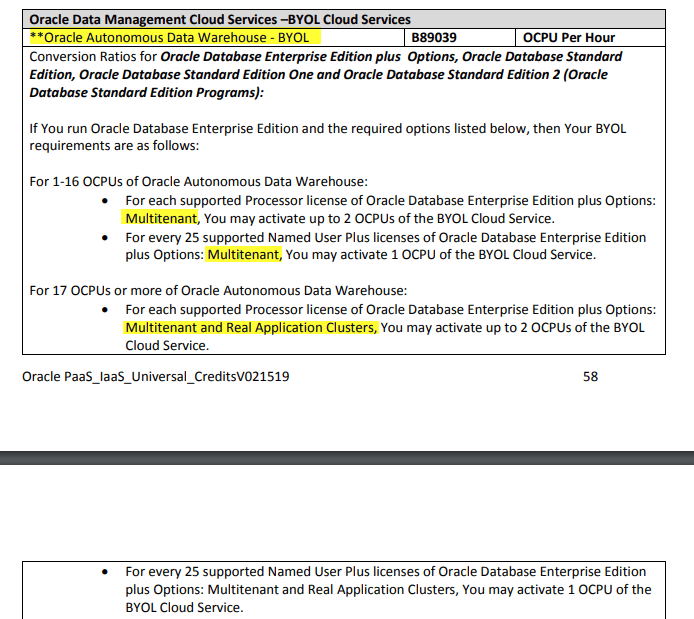
Until the 31st of May 2019, Oracle is waiving the cost of this option. After 31st of May 2019, it will be mandatory for customers to have licenses in place for Multi-Tenant ($17,500 list price per Processor + 22% annual support) and in the case of over 16 OCPUs (cores), Real Application Clusters ($23,000 + 22% annual support).

Source: P59 of Oracle PaaS and IaaS Universal. Additionally, customers who use the standby option will have to license Active Data Guard ($11,500 list price per Processor + 22% annual support).
This means that customers using Oracle’s Automated Database / Data Warehouse Cloud services will see $40,500 per OCPU cost increase from June 1st, 2019 when this promotion expires. At which time, they will be required to buy licenses for Multi-Tenant and Real Application Clusters.
Why Does the Offer Apply Only to “Bring Your Own license”?
Oracle wants to keep customers locked into the same on-premises processor core licensing model. When you pay by the processor core, you pay ALL the time regardless of actual usage.
- You pay for test/dev licenses when no work is done on holidays and weekends.
- You pay when production systems are idle after hours.
- You pay for 30% utilization as much as other customers pay for 90% utilization.
A key economic benefit of cloud services is paying only for what you use either by the hour, storage, query, API call, or reads/writes. With AWS Redshift, you pay by the hour, or you can use Redshift Spectrum pricing and get billed $5 per terabyte of data scanned.
The Real Cost Comparison of AWS Redshift Versus Oracle ADW
We made our own cost comparison between AWS Redshift and Oracle ADW. We used the same AWS instances and storage Oracle quoted in their performance benchmark comparison at this link: – https://go.oracle.com/database-comparison-aws. This comparison reflects the typical database usage (24 X 7) and consequently costs likely to be incurred.
This 1-month consumption projection is based on AWS and Oracle website pricing at the time of this writing (Late Feb 2019). 1 month = 744 hours (31 days) continuous usage. Oracle price based on Pay as You Go. AWS price based on demand.
OCPU is assumed to equate to 1 core of a physical processor. vCPU is assumed to equate to 1 thread of 1 core of a physical processor. Storage has been matched based on available AWS instance-based storage. AWS EU (London) Region used. All figures exclude licensing.

As you can see, AWS Redshift is between 40% and 50% cheaper than Oracle ADW. Remember, no license costs were included. If we include license costs, Oracle’s costs go up by $40,500 / core (multi-tenant + RAC) and $52,000 / core (standby) starting June 1st, 2019.
History of Price Cuts
AWS cut its prices 70 times since 2006. That’s an average of 5 price reductions every year. They can do this because they operate at such a massive scale, they command the highest volume discounts from suppliers. Amazon buys hardware not only for the millions of AWS customers but also for their e-commerce business. A business that processes 51% of all US e-commerce transactions. At their meteoric growth rate, they can afford to pass these savings on to customers and still make a margin. Growth drives down the cost per customer, which drives down prices leading to more growth.

Oracle is trapping customers. There are no price reductions and no savings. With Oracle, you get the short end of the stick…guaranteed.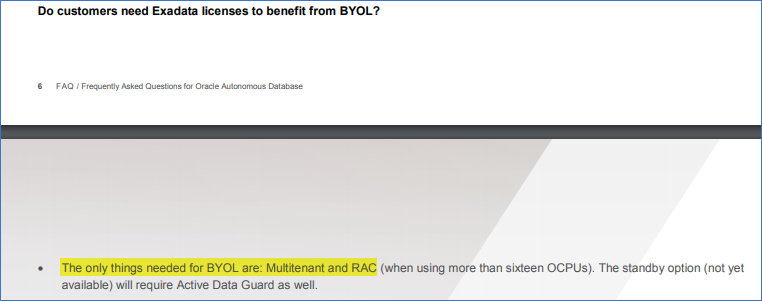 Oracle Autonomous Data Warehouse Pricing used (25th February 2019)
Oracle Autonomous Data Warehouse Pricing used (25th February 2019)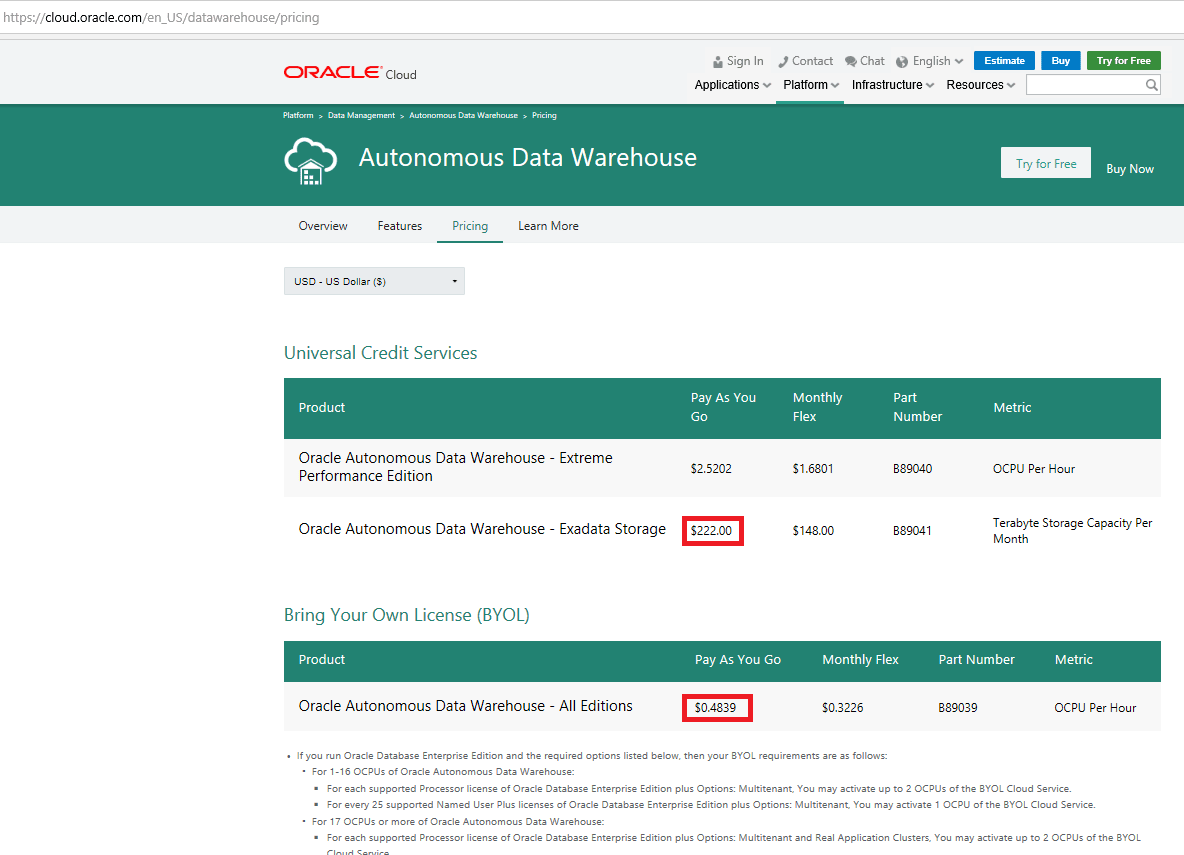 AWS Pricing Used (25th February 2019)
AWS Pricing Used (25th February 2019)
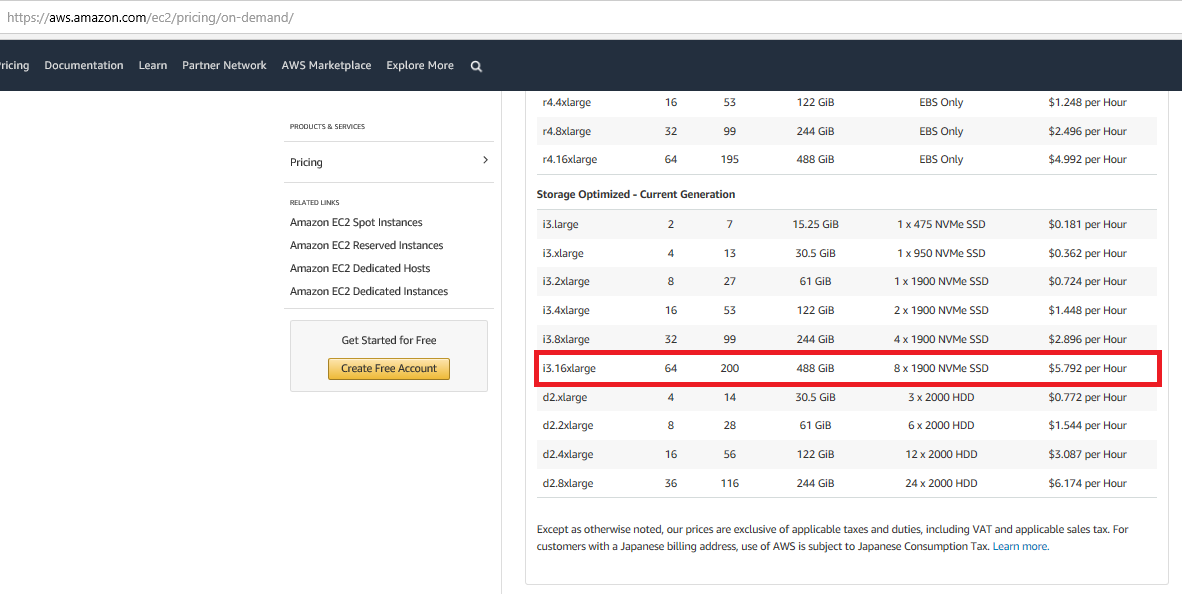
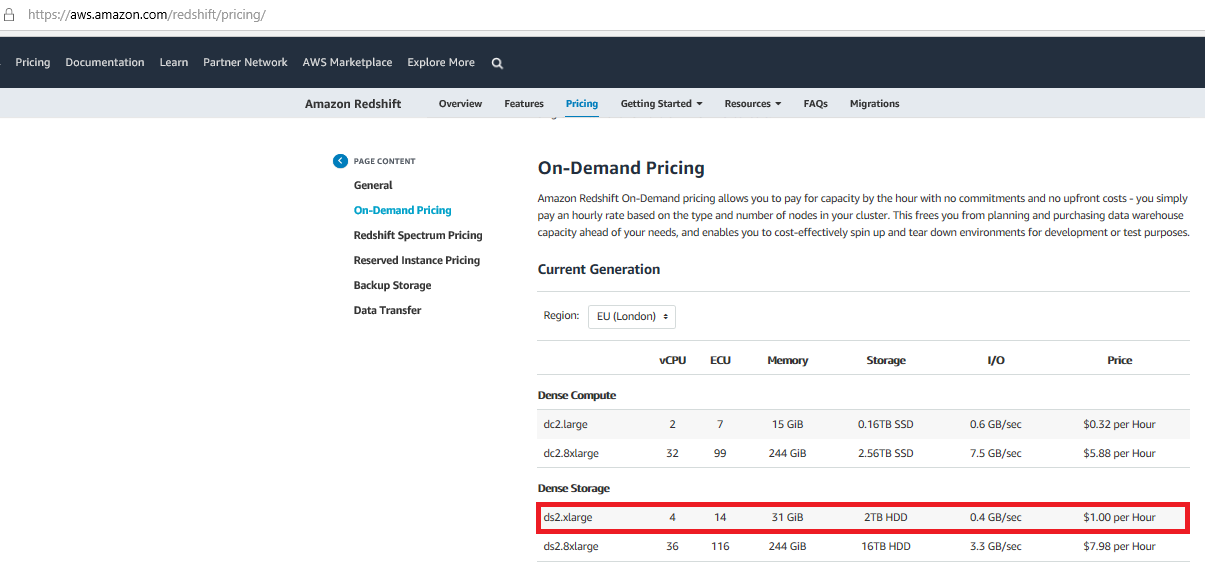
Conclusion
Nothing that Oracle states around its cloud checks out. Oracle receives a 1 out of 10 for accuracy on the topic of cutting anyone’s AWS bill in half.